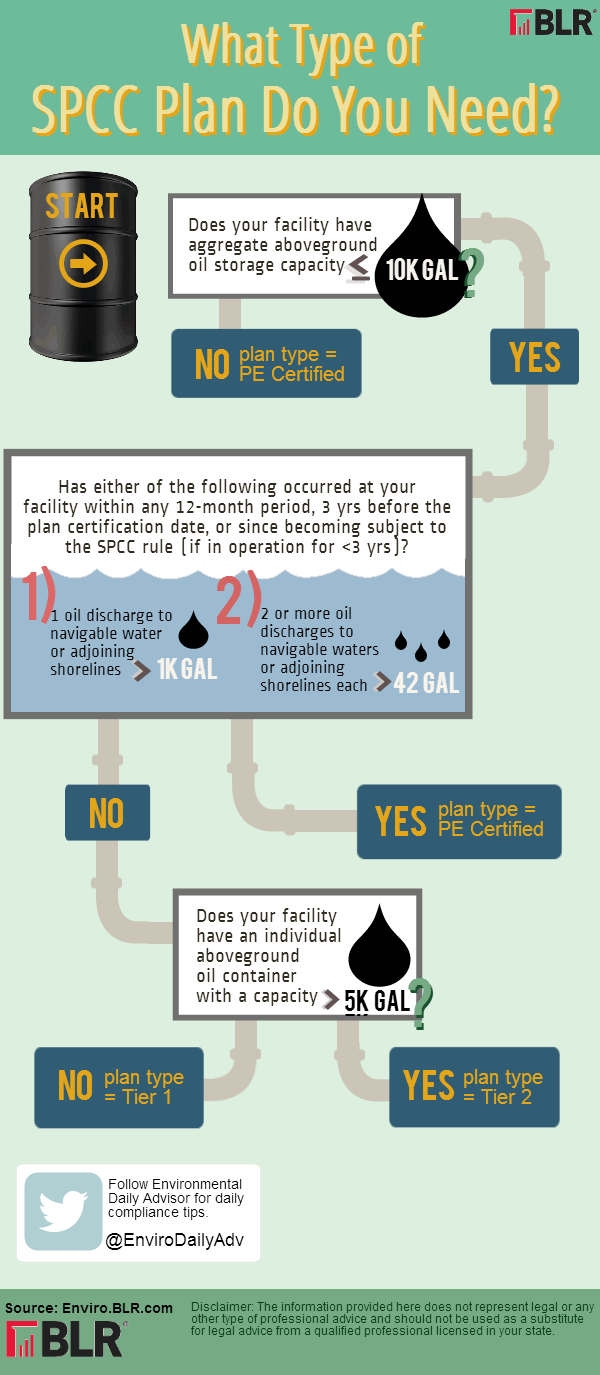So, what’s a “qualified facility?” A qualified facility is one that meets the following Tier I or Tier II qualified facility criteria:
- A Tier I qualified facility is one that has no individual aboveground oil storage container with a capacity greater than 5,000 gal and that has had no single discharge of oil in harmful amounts to navigable waters exceeding 1,000 gal or no two discharges each exceeding 42 gal within any 12-month period in the 3 years before the SPCC plan self-certification date, or since becoming subject to SPCC regulations if the facility has been in operation for fewer than 3 years.
- A Tier II qualified facility is one that has had no single discharge of oil in harmful amounts to navigable waters exceeding 1,000 gal or no two discharges each exceeding 42 gal within any 12-month period in the 3 years before the SPCC plan self-certification date, or since becoming subject to SPCC regulations if the facility has been in operation for fewer than 3 years and has an aggregate aboveground oil storage capacity of 10,000 gal or less.
Environmental Compliance in [Your State] gives you expert analysis of your state environmental regulations, along with instant comparisons between federal and state environmental protection agency regulations. Every key 40 CFR topic is at your fingertips. Get Your Free Trial
True or False? State law governs PE certification for plans. True! Some states, like New Hampshire and Nebraska, do not allow self-certification for SPCC plans – even if EPA does. You should check with your state’s PE licensing board, not your state environmental agency, to see if your state allows for self-certification.

See tomorrow’s Advisor for another infographic on determining if your facility is required to have an Oil Spill Contingency Plan in addition to its SPCC plan.

1 thought on “SPCC Infographic: What Type Of Plan Do You Need?”